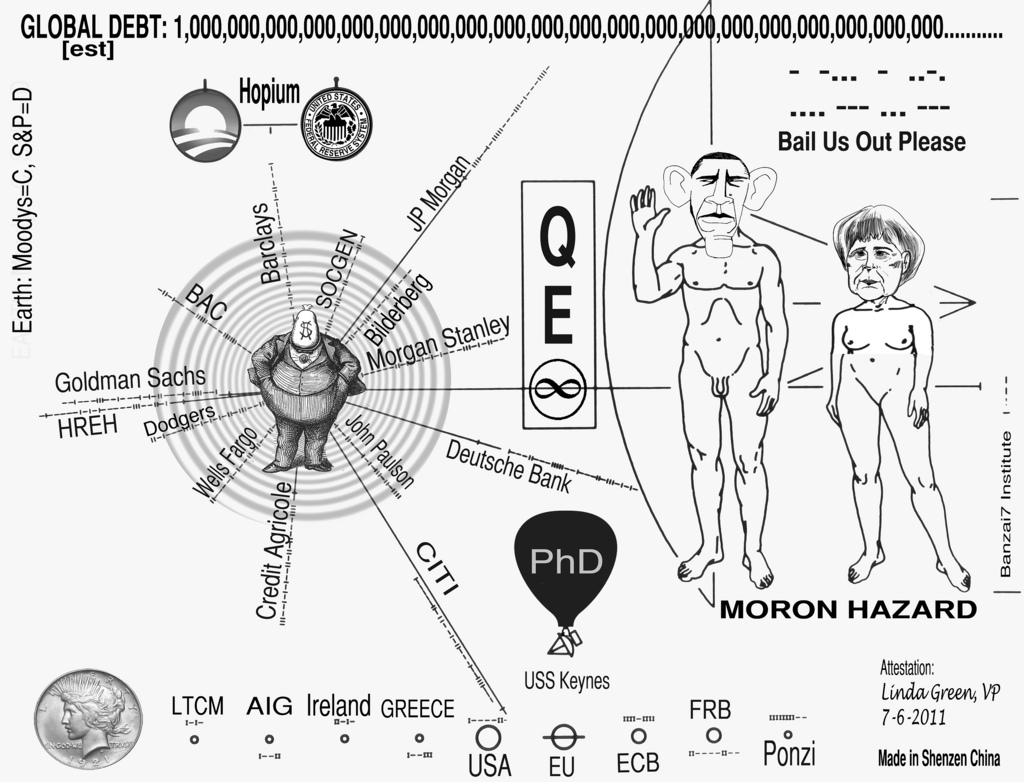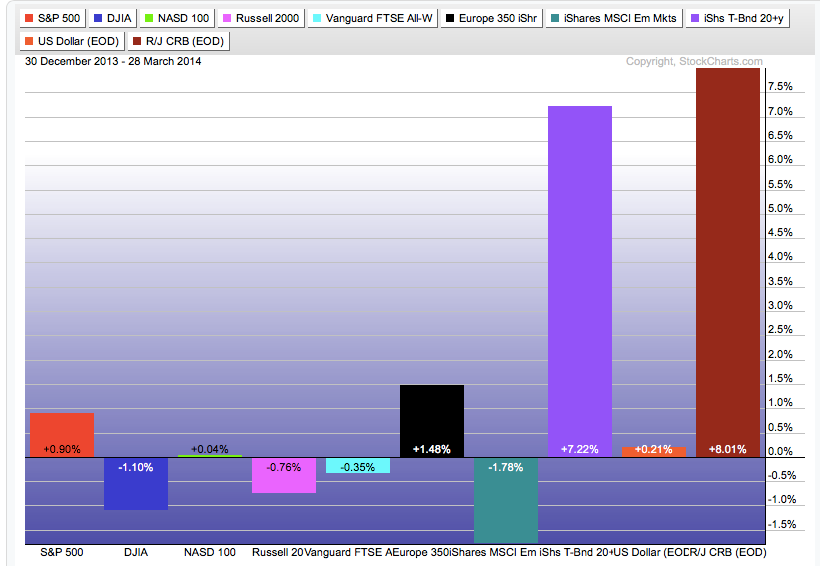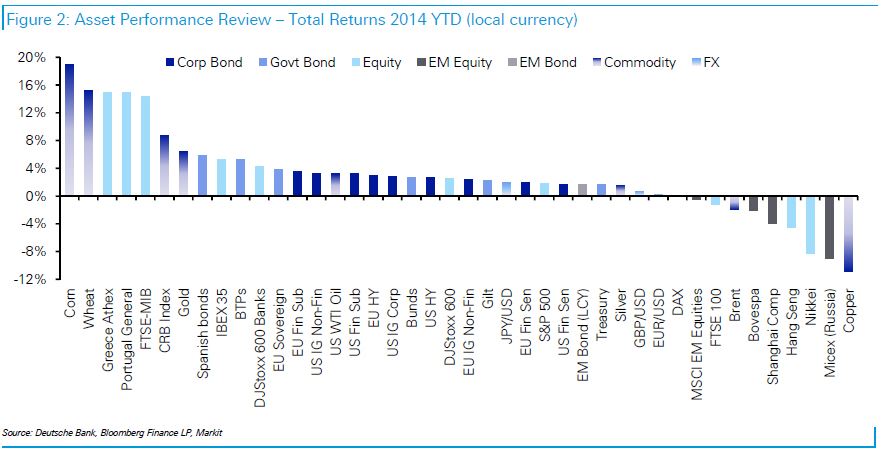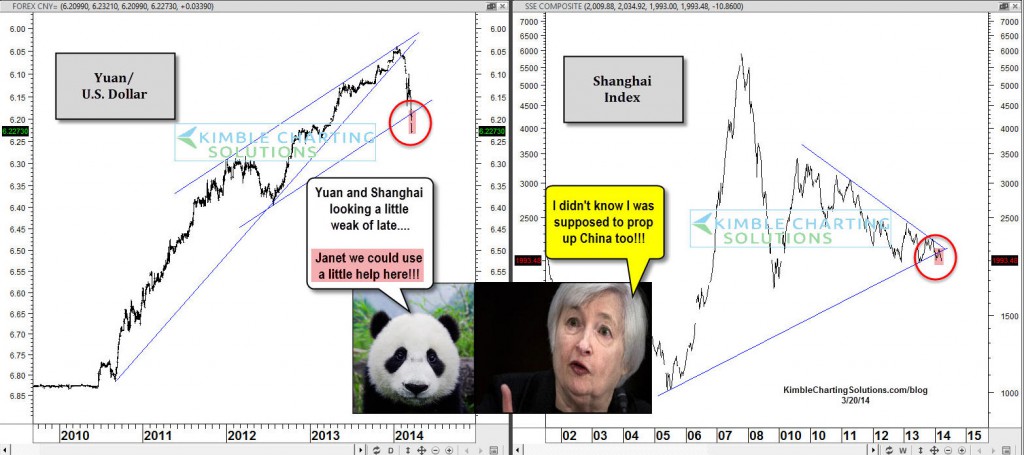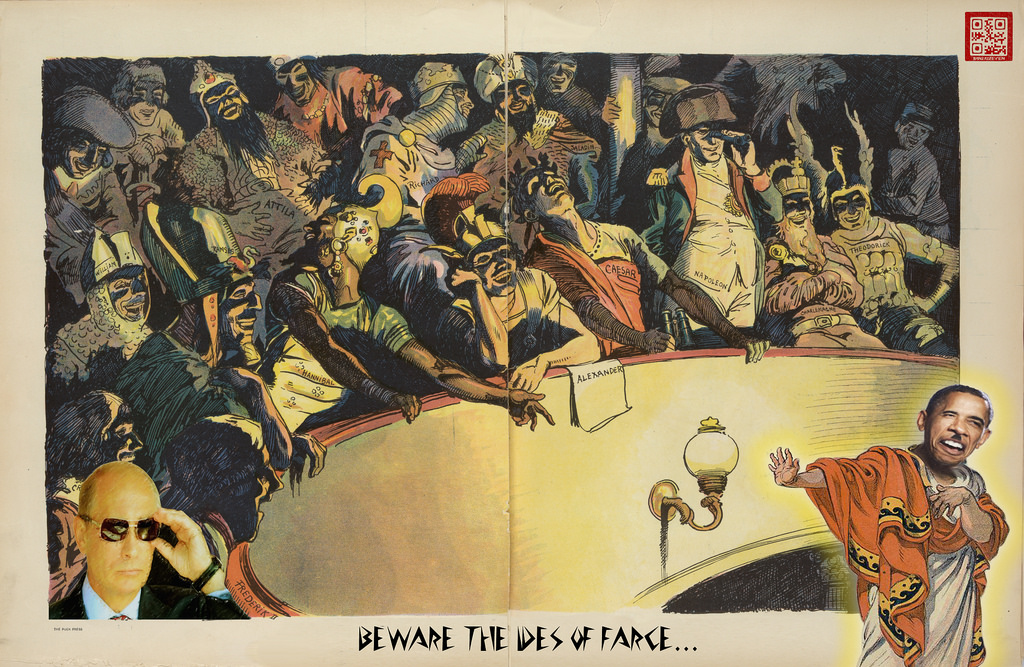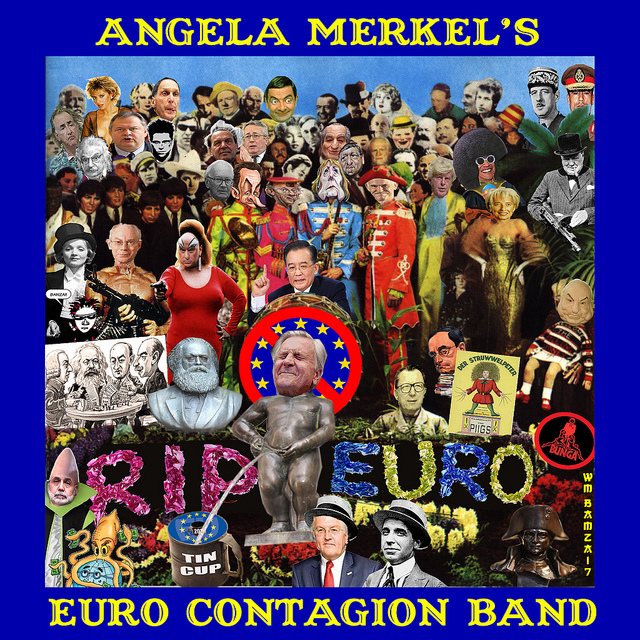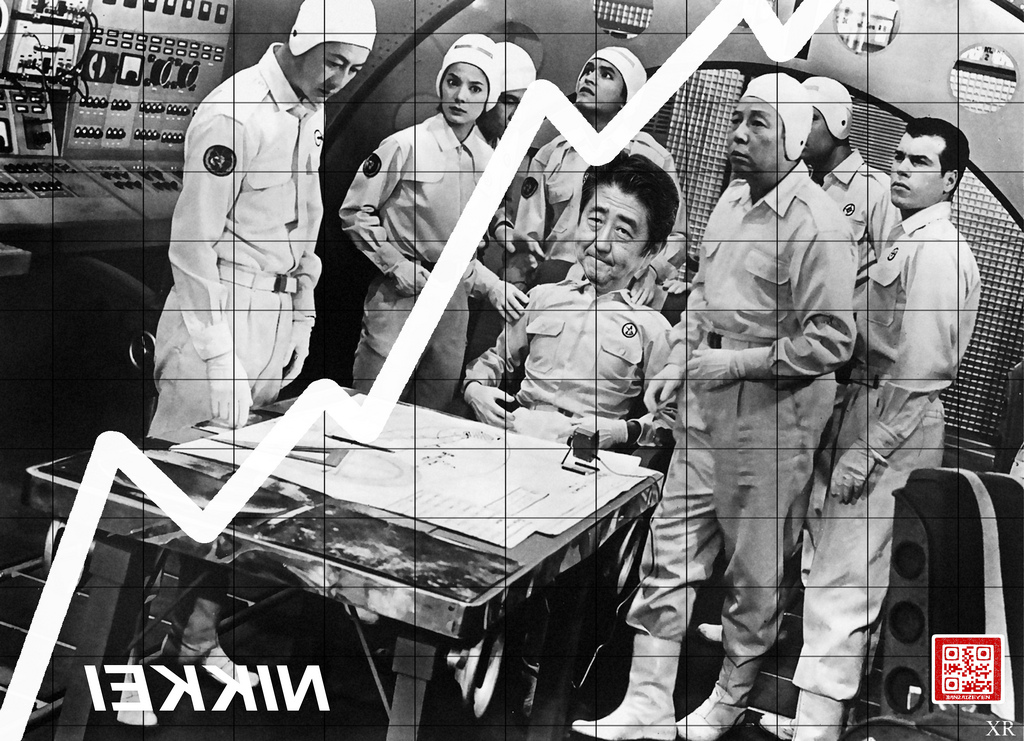Market Wrap as of March 31: New Normal Outlook
April, 01 2014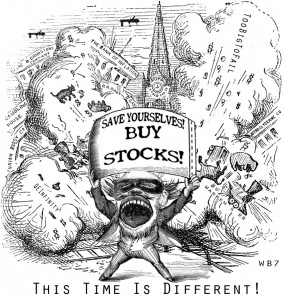 Although global growth expectations are slightly reduced for 2014, we still expect the global recovery to reaccelerate materially this year. Moreover, we foresee continued acceleration in 2015. This improvement should be driven most by advanced economies finally gaining traction, while emerging economies merely stabilize at a sluggish pace. We expect inflation to remain low on balance with oil prices more or less stable and output gaps still wide in advanced economies. And, finally, monetary policy remains highly accommodative for the next couple of years, even as the Fed tapers this year and major central banks cautiously begin to raise administered rates next year.
Although global growth expectations are slightly reduced for 2014, we still expect the global recovery to reaccelerate materially this year. Moreover, we foresee continued acceleration in 2015. This improvement should be driven most by advanced economies finally gaining traction, while emerging economies merely stabilize at a sluggish pace. We expect inflation to remain low on balance with oil prices more or less stable and output gaps still wide in advanced economies. And, finally, monetary policy remains highly accommodative for the next couple of years, even as the Fed tapers this year and major central banks cautiously begin to raise administered rates next year.
We see the current outlook as supportive for risk appetites. Specifically, equities should end 2014 higher, although we do not expect a repeat performance of 2013’s generally outsized gains. We also expect continued upward pressure on government bond yields, especially US Treasuries, although we do not expect any major market selloff. Our outlook is also USD positive for 2014 with the recovery in the US a step ahead of the rest of the G7 and the Fed alone in reducing policy accommodation this year. Moreover, the ECB, BoJ and even BoC have signaled that they remain open to further easing.
Against the backdrop of downside risks, market expectations become a bit more guarded. As has already been demonstrated over the first three months of this year, at the very least investors need to be braced for recurring bouts of volatility. Moreover, materialization of the more serious tail risks—say, a banking crisis in China or a major escalation of the Ukraine crisis—would profoundly alter the fundamental backdrop likely leading to a severe erosion of risk appetites.
Equities: Equities have begun 2014 notably uneven and choppy, highlighting the economic and market risk themes. Entering 2014, analysts and pundits were expecting a repeat of 2013. Things haven’t turned out the way they expected. Equities made no progress in March. SPX was flat while RUT and NDX lost 3% or more. Given the torrid rise of equities in February, to say that March’s lackluster performance was out of the consensus is a substantial understatement.
Investors have been massively underweight both commodities (and fixed income , both of which have massively outperformed; and they are overweight equities, especially technology and small caps, which have declined.
At Friday’s close six out of the eight indexes posted gains — and some of those were quite impressive. The troubled Nikkei bounced back after two weeks in the cellar to a 3.32% gain. The Hang Seng was close behind, up 3.09%. India’s SENSEX and Germany’s DAXK gained 2.69% and 2.62%, respectively. The two laggards were China’s Shanghai and the S&P 500, both with modest losses.
Bonds: The performance of government bonds has defied base case expectations with yields broadly lower year-to-date. Risk themes have dominated the consensus view of global improvement and eventual reduction in policy accommodation.
Currencies: USD has been range-bound, with the trade-weighted index moving as much as 1.5% up and 1.0% down. CAD has weakened on BoC dovishness, while AUD has been bid as the RBA moved away from further easing. JPY has also shown some unwelcome strength. EM currency volatility has been a worry. Most notable has been the unexpected RMB weakening—down over 2.5% in 2014 to its weakest in a year.
Commodities: Oil (Brent) has traded sideways as expected so far this year, although WTI is notably up as a reduction in the bloated Cushing stock has narrowed the spread with Brent. Safe haven demand has kept gold generally bid this year.
The boring stocks are back.
Last week’s continuation of the Great Momentum Massacre has torn down some of the biggest gainers of the past six months. I know it’s difficult to watch traders slaughter these momentum darlings. But you have to tape your eyes open and pay attention. Your trading account depends on it…
Here’s the tally (so far):
- Tech stocks? Cooked.
- Social media? Butchered.
- Biotech? Obliterated.
It’s tough to say at this point if any moves higher will become anything more than a relief rally.
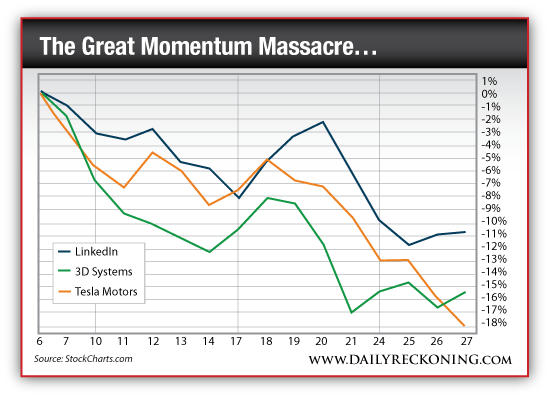
Here’s a fun test you can run on your trading portfolio right now…
If you find yourself thinking “Gee, my trades are only down 2% today,” after the closing bell every day for a week, it’s probably time to trim your losses and figure out what the heck is going on.
Here’s a hint: investors are trading in their riskier growth stocks that have already produced huge returns. Instead, they’re opting for boring, safe stocks.
That’s right. While the NASDAQ continues to slip lower, everyone is buying up Dow components and other boring names that have lagged the averages lately. Take a look…
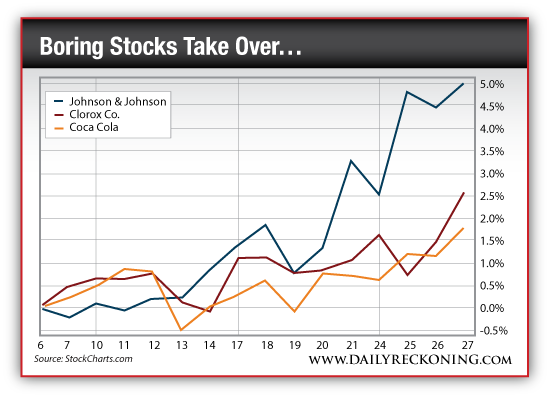
Stodgy dividend-payers like Johnson & Johnson and Clorox are catching a bid. Both are up more than 2.5% over the past 15 trading days while growth keeps getting smacked.
The move to “safe” stocks makes sense. The Dow has slipped behind the rest of the market this year. While the S&P and NASDAQ registered new all-time highs earlier this month, the Dow was nowhere to be found. Now, it’s time to play catch-up…
Does this rotation to boring stocks mean that a market top is in?
I don’t know. I don’t call tops. I don’t call bottoms. I just spot opportunities. If you want to get anywhere in the trading game, this should be your goal, too. Look for the boring stocks to continue to gain traction. And if you’re desperately hanging onto faltering momentum names, today would be a good day to reevaluate you positions…
3 Reasons to Tap Home Equity to Buy Stocks
Are you kidding me?
The article goes on to explain that rates are low and, hey, stocks are much more liquid than real estate. Turn that debt into cash!
What could possibly go wrong? After all, if you make a bad trade here or there, just ditch the house and hit up your broker for a loan. The discount brokers could even make little “Hoovervilles” for broke traders who took one too many gambles with borrowed money.
I’ve already told you the market’s stellar performance wouldn’t remain a secret forever. Now, we’re getting to the point where sentiment appears to be somewhere between enthusiasm and exhilaration. After waiting on the sidelines for years, the average investor is getting drawn back into the stock market…
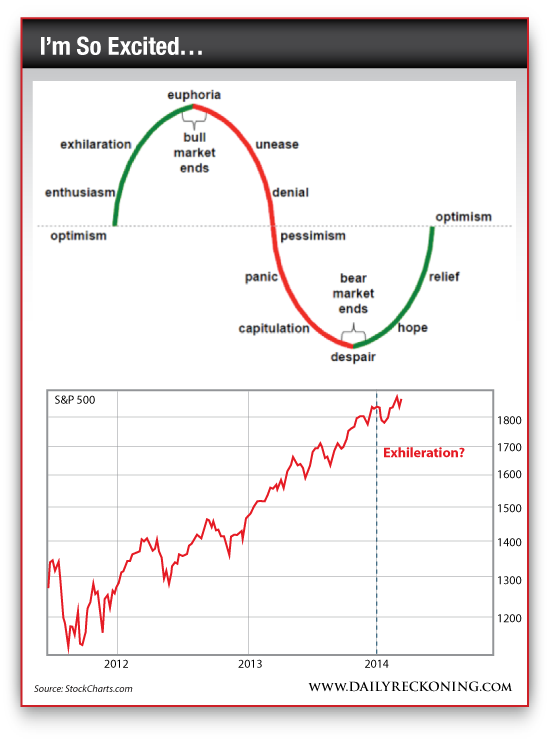
It’s important to note that this sentiment stuff is far from an exact science. And there’s no way to say how far along we really are on this sentiment “cycle”–or how long each phase will last. But right now, it certainly feels like public perception of the market is changing.
Use it to your advantage.
The idiots are ready to hand you stacks of money on nearly every trade. They’re clamoring to invest in all the “hot stocks”. They’ll try to trade the news or they’ll make huge earnings bets. On the other end of every single one of these losing trades? That’s where you come in.
Play the charts. Buy the breakouts–and pass the stocks to the idiots when they become overextended. That’s how you make money in this market…
Top global risks you can’t ignore
As the global economy adapts to a new post-financial crisis world, multiple transitions are underway, and they are occurring at different speeds that investors must be able to handle.
This is a challenging investment landscape to navigate, and it will exhibit volatility. Absent any jarring geopolitical risk, the medium-term outlook for equities is quite positive in an environment of subdued growth and inflation amid healing economies.
Stock investors can systematically, and in measured ways, take advantage of the fears that might arise during this transition. Slowly rising interest rates — if they reflect some level of growth, even subdued — are positive for equities.
Major changes are afoot across the global economy:
The U.S. is transitioning from quantitative easing (QE) to “tapering” to gradual normalization of monetary policy, as evidenced by the Federal Reserve’s recent statement. Consumer optimism is growing, thanks to rising asset prices. Fiscal policy is no longer a drag on aggregate demand and instead is becoming a contributor. The outlook for the job market is improving, but shifting demographics supporting lower labor participation are also helping the overall unemployment picture.
The Fed’s recent “holistic” guidance – giving indications of the timing of the end of QE and the roadmap for possible rate increases — is both an evolution of its communication format and part of this transition. While the U.K. and U.S. appear to be in the same “wagon of the train,” Continental Europe and the rest of the world are not. In fact, they may be on a different train altogether.
European disunion
In Europe, there is room for more QE as financial conditions remain tight with the repayment of the long-term refinancing operation (LTRO), sluggish bank loans and a strong euro. While Purchasing Managers Index (PMI) data in Europe show continued improvements, the combination of the underlying low-growth environment, the ongoing need for structural adjustments, and political challenges also remains.
Other challenges include the implementation of the banking union within the euro zone, unusually high unemployment, particularly for youth, and navigating disinflation in order to stave off the threat of deflation. However, those challenges are quite well known and, barring unforeseen developments, should be for the most part discounted by the markets.
The newest challenge for Europe, in the face of developments in Ukraine, underscores its energy dependence on Russia, which supplies 30% of Europe’s natural gas. And established plans to secure energy through projects such as the South Stream pipeline — intended to link the European Union and Russia through the Black Sea by 2018 — now appear derailed or at least sidelined.
Pressures on Japan and China
In Japan, the triple stimulus launched by Prime Minister Shinzo Abe 18 months ago, consisting of more flexible fiscal policy, more aggressive monetary easing and structural reforms, has brought Japan to a new era.
Structural reform may be the most challenging to implement. While Japanese wage growth seems desirable, if it is implemented in a framework disconnected from the shape of underlying demand, or if it inhibits companies’ ability to pass on some price increases, it could put pressure on corporate margins. That said, corporations continue to benefit from the weaker yen (ICAP:USDJPY) . If the yen remains weak, some level of on-shoring might take place over the next few years, which could help support domestic growth.
It is crucial for Japan to continue to focus on lifting growth to temper the impact of higher rates and its demographic challenge. Japan has a government debt-to-GDP ratio exceeding 220% and is entering its fifth year of demographic contraction. Its elderly population will benefit from higher rates on savings, but with a quarter of its population over 65 — almost twice the amount of children — additional savings revenue for the elderly will most likely not generate a pickup in consumption sufficient to offset the negative impact of higher rates, particularly in the absence of further structural reform and productivity-enhancing catalysts. In fact, interest expense as a percentage of government revenues, currently at about 25%, could increase to 80% if interest rates reach 2%. Japan is clearly in a transition phase.
China is also going through an important transition. Shifting from an investment-driven growth model to a consumption-driven growth model, while developing a viable middle class, is necessary at this stage of its economic maturity.
But the sheer size of the economy and the pace of the population shift make implementing the right policies and sustaining political stability a challenge. The effective execution of the sweeping structural reforms announced and the transformation of its financial system from a directed to an efficient economic model are critical.
Emerging markets’ emerging promise
Broad emerging market (EM) equities have been in the process of adjusting to the prospect of a post-QE world and higher interest rates for the past 12 months, resulting in underperformance versus developed markets by about 40% since January 2012, according to the MSCI EM and MSCI World Indexes.
A big part of this underperformance was driven by the announcement of tapering in the U.S. and subsequent capital outflows. Some of those outflows are linked to “hot capital” that found refuge in higher EM relative yields in the wake of the crisis and that are now, with the expectations of developed market interest rate normalization, returning to developed markets. Countries with healthy balance sheets and large current account surpluses have been in a better position to sustain capital outflows than their neighbors with large current account deficits or excessive external debt.
During the past 12 months, however, some current-account-deficit countries have made healthy adjustments that may not be reflected in the markets yet. Furthermore, even though EM economies have become increasingly fragmented, it is important to remember that they have dealt with rising rates in the past.
The recent Fed announcement on guidance related to policy normalization should help temper investors’ aversion to EM. In fact, we would argue that EM economies with attractively priced, quality companies and an appetite for reforms should regain some level of interest from long-term fundamental investors who are currently underweight EM equities.
To make larger moves, investors will need to see clearly continued progress in current-account-deficit economies and some level of growth revival in countries such as Brazil. The growth issue is in fact the next big question to be answered. As some emerging economies mature, they may be unable to replicate the same level of economic growth seen in the past. Their growth relative to many developed market economies, though, might still be attractive over the medium term.
With more than half of the world’s economy coming from emerging markets, it’s important to understand how the maturing of those economies will affect global growth. A stronger U.S. and possibly Japan, and a slowly recovering Europe, will help balance the healing process in emerging markets over the course of this year.
Finding real growth
The key question investors must ask at this stage is at what speed and under what banner will the ongoing normalization take place around the world. Certainly, the adjustment process will progress in various phases, but it will also need to deal with an unusual two-faced economic reality: risky asset prices amid an underlying economic revival. While both are linked, asset prices have recovered well ahead of the underlying economy as liquidity pushed prices up once systemic risk was assumed to have receded.
Ultimately, investors need to see the high levels of cash on corporate balance sheets find their way into the “real” economy. While buybacks and dividends have been popular, at this point of the cycle we should expect capital expenditure and mergers and acquisitions to pick up.
While stress points around geopolitics (Russia, elections in EM, maturing of the Chinese financial system) and new models (adapting to the outcomes of the post-transition world) will create uncertainty, they can provide fertile hunting ground for investors. From a markets standpoint, valuations are not cheap, but they’re not expensive versus historical standards for the market overall. Emerging markets are particularly cheap and should not be ignored by investors with no or low exposure. The key is to find the right stocks, no matter the style used to exploit the market’s inefficiencies.
